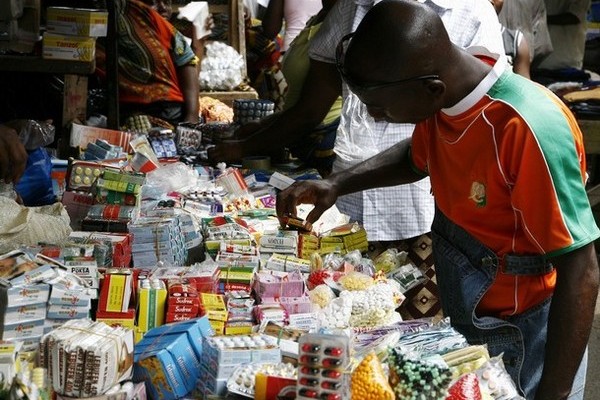From Guangzhou and Mumbai with love?
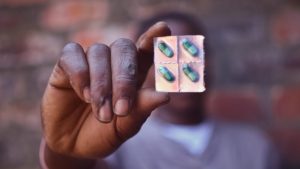
The sights and sounds of a busy African city are something when once experienced are never forgotten. Rowdy traders haggling prices with their customers, street food vendors assembling delicious meals at the roadside and motorcycle taxis zooming through, transporting people to their various destinations. Everyone is in a hurry and everyone is busy trying to survive and make it through another day.
The imagery though chaotic, is a fond one for many who have experienced it first hand either through tourism or by growing up in Africa. 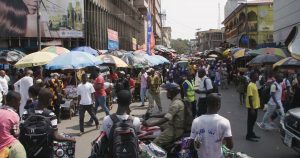 Buried amidst the chaos is the ever-present street “pharmacist”. Usually, a small makeshift stand or sometimes just a carton box packed with contraband medicines for all ailments. The stand is typically manned by an ordinary looking person everyone calls “docta”. Projecting an air of confidence on all things health-related next to signs displaying his or her areas of specialty. People stop by for consultations and prescriptions, a quick exchange of cash is made and they walk away with a supply of pills for whatever illnesses they seek to address.
Buried amidst the chaos is the ever-present street “pharmacist”. Usually, a small makeshift stand or sometimes just a carton box packed with contraband medicines for all ailments. The stand is typically manned by an ordinary looking person everyone calls “docta”. Projecting an air of confidence on all things health-related next to signs displaying his or her areas of specialty. People stop by for consultations and prescriptions, a quick exchange of cash is made and they walk away with a supply of pills for whatever illnesses they seek to address.
The combination of poverty, high unemployment rates and lack of access to healthcare means that street medications are for many the only affordable option for healthcare, despite the associated risks. This is fertile ground for the never-ending stream of counterfeit medicines, which pour unto Africa’s streets from China and India. The demand feeding this multibillion-dollar industry is driven by factors too daunting for corrupt governments with little will to effectively address. Crackdowns when they do happen, are mostly for show than a real attempt at effective regulation.
For many years the focus has been on the risk of sub-standard antibiotics driving antimicrobial resistance and ineffective fake treatments and toxic drugs killing thousands in these parts of the world. While these issues continue to prevail, the last five years have seen a rise in contraband opioids, take the illicit medication market in Africa’s major cities by storm. This newcomer adds another crisis to the ever-growing list, one that the region is wholly unprepared for, with sinister implications for gains made in other areas of public health.
Meet Tramadol – Africa’s Choice Opioid
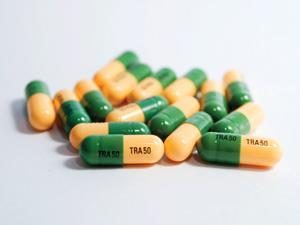
Healthcare providers in developed countries have access to a wide array of opioid medications to treat their patients. 4 countries – the US, Canada, the UK and Australia consume a remarkable 68% of the opioids produced by pharmaceutical companies worldwide. This privilege, abused by some healthcare providers through overprescribing, has been the biggest segue way to the serious opioid crisis now facing the US. In staggering contrast over 150 countries have little or no access to these medications, which when used and prescribed appropriately are essential to address pain in patients with cancer and other chronic pain syndromes.
The main reason behind this inequality in distribution is a system for international drug control, led by the United Nations Office on Drugs and Crime (UNODC) and the International Narcotics Control Board (INCB). These organizations were created to regulate licit use of opioids for medical purposes. Unfortunately, in the process they have created rules of surveillance and accountability that are almost impossible for poor countries to comply with. This has led to severe access issues and very limited options to treat pain syndromes in patients living in developing countries.
Enter Tramadol, a weak synthetic opioid that unlike its much stronger cousins Fentanyl and Methadone is not on the list of medicines regulated by the INCB. For this same reason it very quickly became a favorite on the prescription lists in poor countries. It is frequently the only option to help patients deal with post-surgical pain, cancer pain and other chronic pain issues.Depending on the dosing, Tramadol can have a sedating or a stimulant effect and produce a high like that caused by heroin. The news of these “desirable” effects has quickly filtered unto the streets and docta’s medicine cabinet, driving the non-medical use of Tramadol through Africa’s major cities to new highs.
Young people doing physically demanding work to earn a living are seeking out the drug for its stimulant effects, to allow them to work longer hours only to quickly become trapped in the vicious cycle of addiction. It has also gained popularity in high school and university campuses as a sex enhancing party drug. Tramadol at the right dosing antagonizes serotonin receptors and as a result can delay ejaculation. 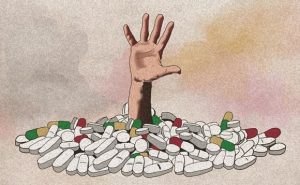
The drug is very cheap costing only a few pennies to score a dozen 50mg tablets, and is readily available on any street corner. The illicit drug market responded to the growing numbers of Tramadol users, by smuggling millions of tablets from India and China into major African cities. The fact that this drug is synthetic implies that there is no limitation to its production by the suppliers in Guangzhou and Mumbai.
In December 2017, Italian authorities intercepted a 50 million dollar shipment of Tramadol pills destined for Libya and in 2016, the US State Department declared Benin, a small West African country of 11 million people, the world’s second largest destination for Indian counterfeit Tramadol. Even more worrisome is the fact that producers have now increased the dosing strength of the pills being sold on the contraband medicine market. A drug usually prescribed in doses of 50mg and 100mg, you now find pills of 120mg, 225mg and 250mg being sold on the street. At higher doses, the nefarious effects of the drug are also increased. More instances of overdose and death as well as higher rates of aggressive and criminal behavior are being reported in recent months.
The agricultural industry has not been spared by the widespread abuse of Tramadol and it has filtered its way even into farming communities. Farmers in West and Central Africa have used the drug to enhance cattle feed, so the farm animals can plough for longer hours. This curious discovery was made when, researchers in Cameroon thought they had identified a medicinal plant source for Tramadol. They realized upon further inquiry that this was the result of direct human contamination from farmers feeding this medication to cattle.
Several countries in the region have stepped up to try and fight the growing scourge of Tramadol addiction, though many others seem oblivious to the issue growing in plain sight. Egypt is now strictly regulating Tramadol use and cracking down on illicit shipments of the drug, after a study led by the Ministry of Health showed that a staggering 70% of people seeking addiction treatment in the country were victims of Tramadol abuse.
Out of Sight is Out of Mind
 Hardly a day goes by without a headline or an article on the opioid crisis that’s sweeping across the US, now considered to be one of the biggest public health crises facing the country. The United States, is one of the wealthiest and most powerful countries in the world, yet has struggled with effectively containing the ravages of the opioid crisis happening within its borders. Africa’s opioid crisis on the other hand is steadily growing and claiming more victims by the day with little attention paid to it both at the local level and at an international level.
Hardly a day goes by without a headline or an article on the opioid crisis that’s sweeping across the US, now considered to be one of the biggest public health crises facing the country. The United States, is one of the wealthiest and most powerful countries in the world, yet has struggled with effectively containing the ravages of the opioid crisis happening within its borders. Africa’s opioid crisis on the other hand is steadily growing and claiming more victims by the day with little attention paid to it both at the local level and at an international level.
The main reason behind this is the epidemic is affecting the poorest and most vulnerable groups in the society who mostly have no one to advocate for them at the national level. The thousands of addicted youth dying from overdose, or suffering the crippling effects of addiction are at the very bottom of the social strata. They rely on the stimulant effects of Tramadol to continue to do the kinds of physically demanding jobs, which allow them to make a living. A lot of them are porters, motorbike taxi riders, manual laborers on construction sites in big cities etc.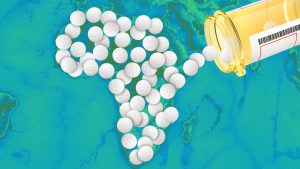
Those of them who want to seek help for their addiction find that these services are not readily available or affordable for them. Centers for the treatment of addiction are few and far between and barely equipped to serve the growing numbers of victims of addiction in need of assistance. One can easily imagine the far-reaching effects of this growing epidemic extending to other areas of public health. Africa is a region that continues to bear a considerable burden of infectious diseases and mental health issues. The emergence of an opioid crisis would certainly erode the gains made in controlling these public health issues.
Is Tighter Regulation the Answer?
At the end of 2017, the UNOCD issued a statement raising the alarm on the increased trafficking and consumption of Tramadol and its health and security implications for the region. This has led to increased interceptions and seizures of Tramadol across W. Africa by government authorities. Despite these crackdowns, there has barely been a dent in the supply chain of the drug, given the porous nature of borders connecting countries in the region.
The WHO has been shy in voicing its endorsement for a tighter regulation of Tramadol, a move that could essentially mean adding this medication to the list of internationally controlled opioids. While this may possibly decrease the illicit use of the drug by tightly regulating its importation and use, it will also penalize millions of patients with chronic pain who are for most part sub-optimally treated and die in agony. Many also argue that a tighter regulation of Tramadol will simply open the way for other opioids to become the drug of choice on the illicit drug market.
These conflicting factors mean that there isn’t a straightforward answer to addressing the problem. If governments in the regions hope to swing the tide toward winning the fight against the opioid crisis in Africa, they will have to take on the issue as seriously as any of the other major public health issues affecting the region. This will require concerted collaborative efforts between countries in the region to target trafficking networks within and between borders. Also more effective reporting systems will need to be put in place to capture the scale of the problem. Most importantly treatment facilities will have to be made available and affordable for persons struggling will issues related to addiction in order to break the cycle. Implementing these measures is certainly not easy in a region with a lot on its public health priority list.
A good place start is acknowledging that there is indeed an issue and raising awareness about it. Africa has a growing opioid problem and its not going away, the time to wake up and face it head on is now.
Written by : Boghuma K. Titanji

